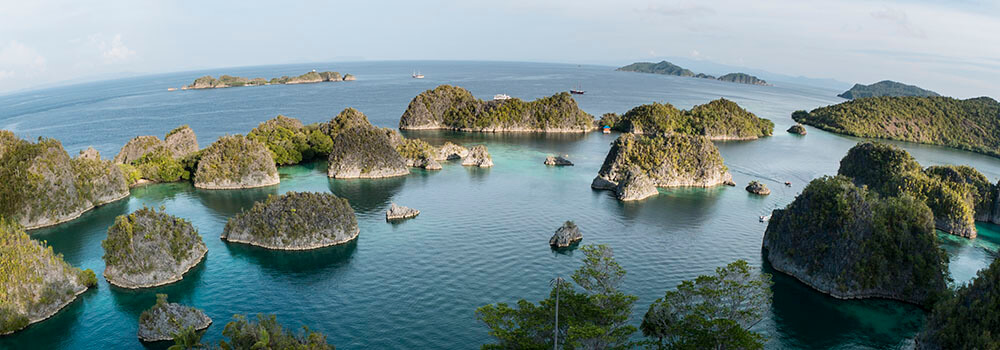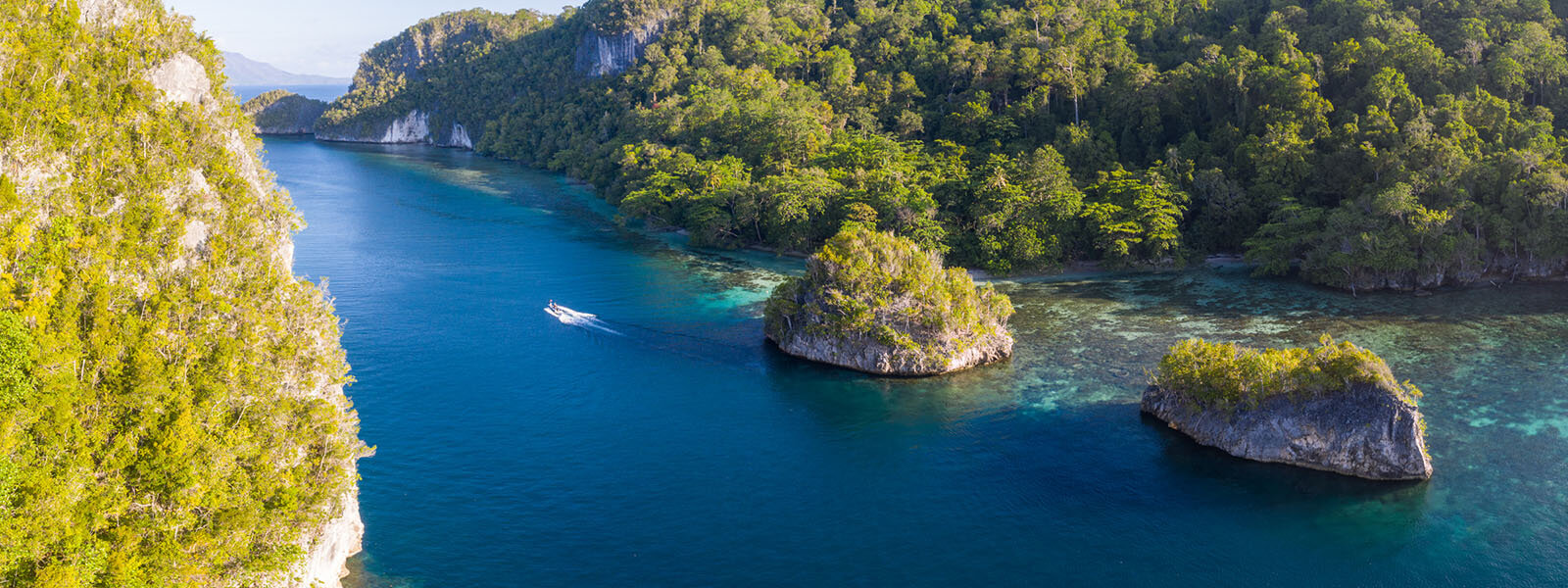Snorkeling the Kaleidoscopic Reefs of Alyui Bay
 Alyui Bay is the legendary, must-see destination that is a small part of our popular Raja Ampat, Indonesia snorkeling tour. Raja Ampat possesses some of the highest levels of marine life on the planet, and after many years and closing in on 75 tours to the area, we believe that Alyui Bay represents a biodiversity hotspot within the Bird’s Head Seascape.x
Alyui Bay is the legendary, must-see destination that is a small part of our popular Raja Ampat, Indonesia snorkeling tour. Raja Ampat possesses some of the highest levels of marine life on the planet, and after many years and closing in on 75 tours to the area, we believe that Alyui Bay represents a biodiversity hotspot within the Bird’s Head Seascape.xx
Located in the northwest corner of Waigeo, Alyui Bay has some of the most stunning scenery in the region. Once a massive plateau of vibrant coral reef, plate movements thousands of years ago caused an uplifting event that elevated the ancient reef hundreds of feet above sea level. Sheer vertical limestone cliffs now define the large, deep bay and the limestone that once supported coral, now supports a diverse, tropical jungle whose lush foliage often extends right to the water’s edge, giving the impression of enormous walls of forest that erupt vertically from the water.
x
Alyui Bay possesses a variety of marine habitats. Large islands at the mouth of the bay have extensive fringing seaward reefs that possess a variety of both hard and soft corals and hundreds of species of reef fish. Deeper into the bay, reefs fringing from the islands change in coral composition as the areas themselves become more protected from larger ocean swells. The network of high limestone islands also creates protected, shaded channels where nutrient-rich, fast-moving water flows through to support a huge diversity marine life including colorful sponges, tunicates, soft corals, and hydrozoans. Nudibranchs are very common in these types of habitats. At the Pearl Farm, shallow sand and rubble habitats offer us the chance to see rare and interesting invertebrates and fish. Given the number of habitats, the relative location within the coral triangle and its size, it’s no wonder the marine diversity in Alyui Bay is astounding!
x
This itinerary was designed to take full advantage of the wealth of snorkeling opportunities in and around Alyui Bay and for the marine enthusiast, this is an opportunity almost too good to miss! Along with our snorkeling adventures, we will also have the chance to see a variety of tropical birds – many that are endemic to the area, visit white-sand beaches, and use dinghies to cruise through narrow passages that lead into hidden bays. Since first visiting this area in the early 2000’s, we have been dreaming of doing this type of snorkeling tour in Raja Ampat and finally, we are!
ITINERARY
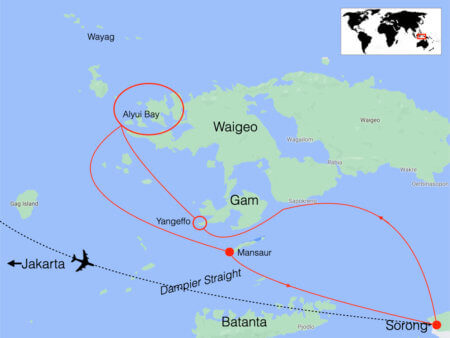 Our snorkeling tour begins and ends in Jakarta, Indonesia. One round trip, internal flight (Jakarta-Sorong-Jakarta). Upon our arrival in Sorong, we will board our boat and cruise towards our first destination. Please note that although our plan is to spend the bulk of our time in Alyui Bay, weather, tides, and opportunities to explore all play a role in the decisions about our daily schedule as well as the overall itinerary.
Our snorkeling tour begins and ends in Jakarta, Indonesia. One round trip, internal flight (Jakarta-Sorong-Jakarta). Upon our arrival in Sorong, we will board our boat and cruise towards our first destination. Please note that although our plan is to spend the bulk of our time in Alyui Bay, weather, tides, and opportunities to explore all play a role in the decisions about our daily schedule as well as the overall itinerary.
Day 1: Jakarta / Anara Airport Hotel, Jakarta
Meals provided: D
Meet in Jakarta, Indonesia at our group hotel, the Anara Airport Hotel, for the tour orientation and welcome dinner. As is often the case with our internal flight, we will depart for Sorong in the late evening, thus our ‘overnight’ will be in transit to Sorong. Overnight Anara Airport Hotel, Jakarta.
Day 2: Sorong / Samambaia
Meals provided: B,L,D
Fly to Sorong and transfer to our live-aboard boat, the Sea Safari 8. We’ll have a boat orientation and then lunch before we depart for our snorkeling adventures. While we do not plan to have the chance to snorkel today, if time and weather permits, we will give it our best. Overnight Samambaia.
Day 3: Yangeffo
Meals provided: B,L,D
The tiny mangrove islands of Yangeffo are separated from the main island of Gam by little more than a 75m-wide channel. Normally, mangrove islands would be fairly turbid and, as such, lack high coral abundance and diversity, but the channel focuses strong water flow that flushes the area of sediment. This results in clear-water mangroves where a huge number of corals use the prop roots of mangroves as substrate to grow upon. The clash of ‘habitats’ makes for amazing snorkeling opportunities! We will snorkel both sides of the channel, especially to take advantage of the reef that extends from Gam. Overnight Samambaia.
Day 4 – 10: Waigeo / Alyui Bay
Meals provided: B,L,D
Alyui Bay resides along the northwestern tip of Waigeo and is home to some of the most amazing marine habitats in the world. We often come here for a few days on our regular Raja Ampat tour and leave with everyone wishing for more! Many of the shallow habitats are dominated by colorful sponges, tunicates, and soft corals, sometimes growing so abundantly that it looks like a kaleidoscope exploded onto the walls of the island.
Dozens of species of nudibranchs are usually recorded on each snorkel session and in places like the Pearl Farm where we will have the chance to snorkel over mixed sand and rubble habitats, rare creatures like seahorses, flamboyant cuttlefishes, cockatoo wasp fishes, and tasseled wobbegong sharks are the norm. Alyui Bay also has extensive coral gardens, some that will take several sessions to full explore, as well as dramatic walls where we may see pewter angelfish or the CTA logo: the humphead grouper (barramundi cod).
We will spend seven days snorkeling the many habitats of Alyui Bay, and with our extended time, have the chance to explore some of the other nooks and crannies of the bay where we might find a wealth of even crazier marine critters! The Pearl Farm is an active pearl-harvesting and breeding station, and we may have the chance to visit the facilities to learn about the process of pearl-farming. Alyui Bay is also a haven for bird watchers, and we will absolutely jump in the dinghies to explore many of the intimate passages and private bays that can be found throughout the maze of limestone islands. Overnight Samambaia.
Day 11 – 12: Dampier Strait / Mansuar / Frewinbanda
Meals provided: B,L,D
The island of Mansuar and FrewinBanda sit along the northern edges of Dampier Strait and acts as waypoints for all types of marine life that cruise through the area. The incredibly rich coral gardens are home to resident herds of bumphead parrotfish, and schools of barracuda, unicornfishes, and fusiliers. Greens and hawksbill turtles, and black and white-tip sharks are regularly sighted along the reef margins and strong currents along the pier support a forest of red and yellow sea fans. We’ll spend the next two days exploring a variety of seaward-facing habitats where the big fish roam! Overnight Samambaia.
Day 13: Sorong / Jakarta / Anara Airport Hotel
Meals provided: B,L,D
Disembark for our connection to Jakarta. Check in to our group hotel, the Anara Airport Hotel. Farewell dinner at the hotel. Overnight Anara Airport Hotel, Jakarta.
Day 14: International flights or extensions
Meals provided: B
DEPARTURES
Jan 19 – Feb 01, 2025 ←Click to request a booking
Accommodations: Samambaia
Guides: Lee Goldman, Ethan Daniels
Length: 14 days
Prices and Payment schedule:
$8500 USD per person, double occupancy
$9000 USD per person, master cabin (if available)
Reservation deposit: $500 USD
July 19, 2024: $4000 USD
Oct 19, 2024: $4000 USD / $4500 USD Master cabin
Tour cost includes:
- Accommodations throughout tour dates
- All meals on days 2 through 13 (dinner on day 1 – breakfast on day 14)
- All internal transfers including international arrival and departure transfers
- Non-alcoholic beverages
- All snorkeling and park fees
- All gratuities
Tour cost does not include:
- Round-trip international airfare
- Additional hotel accommodations and meals as a result of travel outside of the program dates
- Visa requirements including payments
- Alcoholic beverages
- International departure taxes
- Extra / overweight baggage fees
- Trip insurance (recommended; we recommend Travel Guard, World Nomads, or Travel Insure)
- DAN insurance (required unless personal insurance program has worldwide emergency evacuation services)
- Additional accommodations while on tour in the event of flight schedule changes or events of force majeure
- Fuel surcharges (if applicable)
Cancellation policy:
180 – 91 days prior to departure: 50% of trip cost
90 days or less prior to departure: 100% of tour cost
Please see our Terms and Conditions
ACCOMMODATIONS
We use the finest live-aboard boat in Indonesia to host us on our exploration of Alyui Bay, the M/V Samambaia. In Jakarta, we stay at the Anara Airport Hotel in Terminal 3 of Soekarno–Hatta International Airport. Please visit our accommodations page for more photos or use the link to visit the live-aboard/resort website.
SAMAMBAIA
 The M/V Samambaia is a traditional Indonesian wooden sailing vessel called a Phinisi. Built in 2015, she is 42-m long and offers four double and two twin cabins below deck and one master cabin on deck that can accommodate up to 14 guests. Attention to detail in the crafting process is reflected throughout the cabins and each cabin is equipped with individual air conditioning, and ensuite bathrooms with a rain shower head paired with a hand shower, western standard non-marine toilet with integrated bidet and a washbasin carved out of fossil wood. The menu revolves around traditional Asian and western style cuisines. More photos
The M/V Samambaia is a traditional Indonesian wooden sailing vessel called a Phinisi. Built in 2015, she is 42-m long and offers four double and two twin cabins below deck and one master cabin on deck that can accommodate up to 14 guests. Attention to detail in the crafting process is reflected throughout the cabins and each cabin is equipped with individual air conditioning, and ensuite bathrooms with a rain shower head paired with a hand shower, western standard non-marine toilet with integrated bidet and a washbasin carved out of fossil wood. The menu revolves around traditional Asian and western style cuisines. More photos
ANARA AIRPORT HOTEL
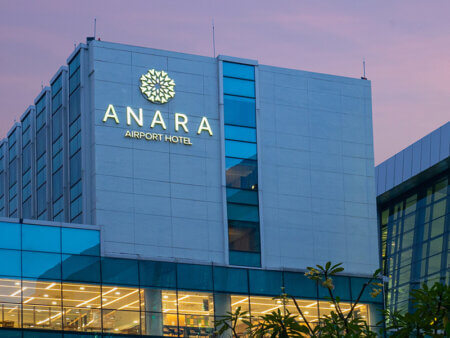 Anara Airport Hotel is the only integrated hotel with Terminal 3 International Airport Soekarno-Hatta. Deluxe rooms include flatscreen TV with cable and satellite, work desk, hair dryer, mini cooler, and coffee/tea maker. Explore authentic Asian and delightful international cuisines at the Selasih restaurant or relax in the ambiance of the Lobby Lounge. Onsite facilities include a wellness spa and gym and four functional/meeting rooms. Easy access from the airport Combined with the elegance of a modern hotel makes Anara the perfect choice for business and leisure travelers. More photos
Anara Airport Hotel is the only integrated hotel with Terminal 3 International Airport Soekarno-Hatta. Deluxe rooms include flatscreen TV with cable and satellite, work desk, hair dryer, mini cooler, and coffee/tea maker. Explore authentic Asian and delightful international cuisines at the Selasih restaurant or relax in the ambiance of the Lobby Lounge. Onsite facilities include a wellness spa and gym and four functional/meeting rooms. Easy access from the airport Combined with the elegance of a modern hotel makes Anara the perfect choice for business and leisure travelers. More photos
WHAT TO EXPECT
Our main moorage in Aljui Bay lies at less than one degree south of the Equator. As an equatorial island archipelago, weather year round is hot and humid, with nearly daily rain showers occurring in the early morning or late afternoon. Daytime temperatures hover around 86º F (30º C) and are not much different in the evening. Water temperatures average around 82º F (28º C), though cooler temperatures may occur if steady rains cause a thin layer of cool freshwater on the surface.
Water movements around the islands of Raja Ampat may be strong. While we plan our snorkel session around the slack tides, we also have several sites where having water movement is an advantage. These drift snorkels allow us to cover large areas of reef without having to swim too hard. Our snorkel sessions are 100% boat supported and two dinghies will be there at all times to assist anyone for whatever reason.
There may be opportunities to visit the Pearl Farm and beaches for nature walks or to just chill in the shade during the warm afternoon. Beach walks only require loose fitting clothes and foot protection that can get wet (e.g., sandals or neoprene booties).
Please read more about our daily schedule.
WHAT TO BRING
The following list is a suggestion of things to bring and applies to almost all our trips. Specific items on a particular departure will be noted on the departure information.
-A good fitting mask, snorkel, and set of fins. If your equipment is brand new, please try it out in the pool. Determining the fit and function of your equipment in the pool includes doing several laps with all your equipment on. Doing several snorkel dives is also very beneficial. It is also important to clean your new equipment, especially your mask. Cleaning procedures for your mask include light scrubbing with toothpaste or dishwasher soap to remove the layer of silicon used to preserve the mask during shipping. Clean both sides of the mask. Doing this greatly reduces the chances of having your mask fog. Not doing this, even when using mask de-fogger, usually results in a fogged mask.
-A wetsuit, rash guard, diveskin, or any type of clothing that can be used for thermal and/or protection from the sun. We suggest bringing a full 3mm wetsuit and some type of core insulation like a vest or shirt made of 1 – 2 mm neoprene (e.g., Lavacore or Sharkskin shirts or vests). These items will not only provide thermal protection but protection from the sun as well. For those who feel that a 3mm suit may be too warm, please consider a full body skin or rash guard to ensure protection from the sun. With regards to thermal protection, remember the saying: It is better to have and not need, than to need and not have. One that note…
-Head protection in the form of a wetsuit hood, a cap, or even a bandana. Anything that can keep the sun off your head is extremely important. It is the most exposed part of our bodies when we are floating on the surface.
-Underwater flashlight on departures with a planned night snorkel
-Biodegradable sunscreen lotion. Sunscreen lotions can be harmful and even kill tiny larvae (baby marine life). It is fine to wear on land, but we highly discourage the use of sunscreen lotions in the water. A full wetsuit or dive skin will protect one from the sun much better than lotions and provide thermal protection. It is truly a win-win for everyone and the marine environment.
-Casual, lightweight, tropical clothing
-Sunglasses (and a spare in case you lose your main pair)
-Comfortable footwear such as active sandals (Teva, Keen, Merrell, etc.)
-Hats. We cannot stress the importance of a hat in the tropics!
-All our boats provide items like shampoo, soap, towels, etc. We bring this up because these items represent added weight or may leak.
Other items to consider:
-Lightweight rainwear to protect from the occasional afternoon shower
-Binoculars
TRIP REPORTS
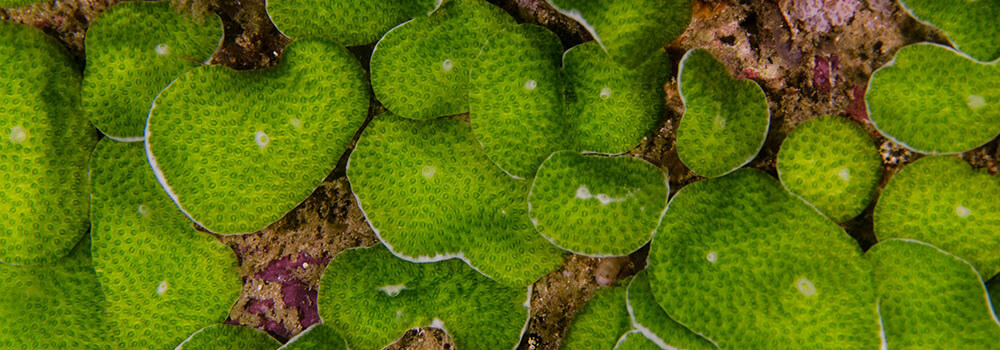
Alyui Bay, Raja Ampat
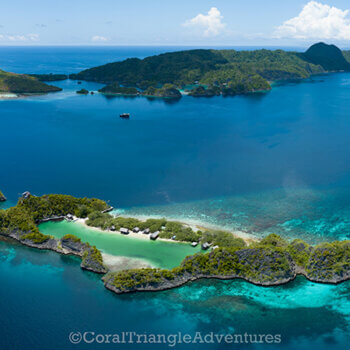
Alyui Bay Oct 2023 Trip Report
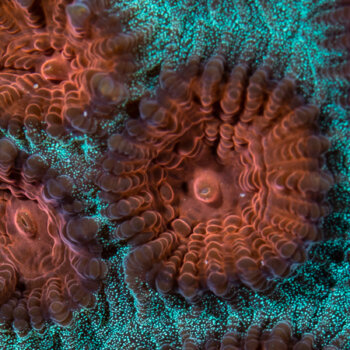
Raja Ampat trip report March 2023

Raja Ampat, November 2022 Trip Report
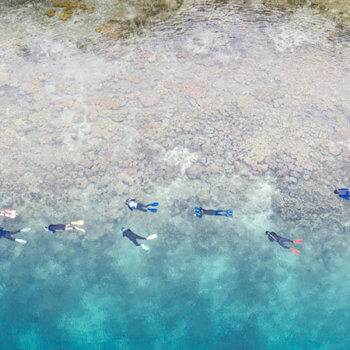
Raja Ampat Trip Report, February 2020

Halmahera and Raja Ampat Trip Report
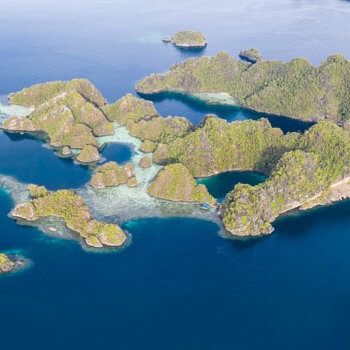
Raja Ampat Trip Report Nov 2018
